India’s beautiful lands are home to some of the world’s most amazing animals. From thick jungles with Bengal tigers to big wetlands with rare birds, India offers many chances to take beautiful wildlife photos. This guide will help you plan a great wildlife photography trip in India. It will show you the best places to go, give you helpful tips, and tell you about the amazing animals you might see.
- 1. Why Travel to India for Wildlife Photography?
- 2. Best Time to Travel to India for Wildlife Photography
- 3. Top Destinations for Wildlife Photography in India
- 1. Ranthambore National Park (Rajasthan)
- 2. Kaziranga National Park (Assam)
- 3. Sundarbans National Park (West Bengal)
- 4. Bandhavgarh National Park (Madhya Pradesh)
- 5. Jim Corbett National Park (Uttarakhand)
- 6. Keoladeo National Park (Rajasthan)
- 7. Periyar Wildlife Sanctuary (Kerala), travel to India for wildlife photography
- 4. Essential Photography Gear for Wildlife Photography
- 5. Wildlife Photography Tips for Beginners
- 6. Eco-Friendly Wildlife Photography Practices
- 7. Conclusion: Why India is a Paradise for Wildlife Photographers
- FAQs
1. Why Travel to India for Wildlife Photography?
India has many different kinds of places, making it a great place for wildlife photographers. From the snowy mountains of the Himalayas to the hot, wet forests of the Western Ghats, India has some of the world’s most special and famous animals. If you want to take pictures of animals like tigers and leopards, or colorful birds in wetlands, India is the perfect place to see wildlife in their homes.
Highlights:
- Large national parks and wildlife sanctuaries.
- Many different kinds of animals, like Bengal tigers, elephants, leopards, and many kinds of birds.
- The chance to take pictures of special animals like the Asiatic lion, one-horned rhinoceros, and snow leopard.
2. Best Time to Travel to India for Wildlife Photography
The timing of your wildlife photography trip to India is important. Most parks are open from October to June, but each season offers different chances to take photos.
- Winter (October to February): This is the best time for wildlife photography, as animals come out into open places to warm up in the sun. The weather is also cooler and more comfortable for traveling and taking long photos.
- Summer (March to June): During the hotter months, animals gather near water, making it easier to see and photograph them. However, the extreme heat can be difficult for both photographers and their equipment.
- Monsoon (July to September): Most national parks are closed during the monsoon because of heavy rain, although some places, like Ladakh for snow leopards, are still open.
3. Top Destinations for Wildlife Photography in India
1. Ranthambore National Park (Rajasthan)
Optimal for: Bengal tigers, leopards, and sloth bears.
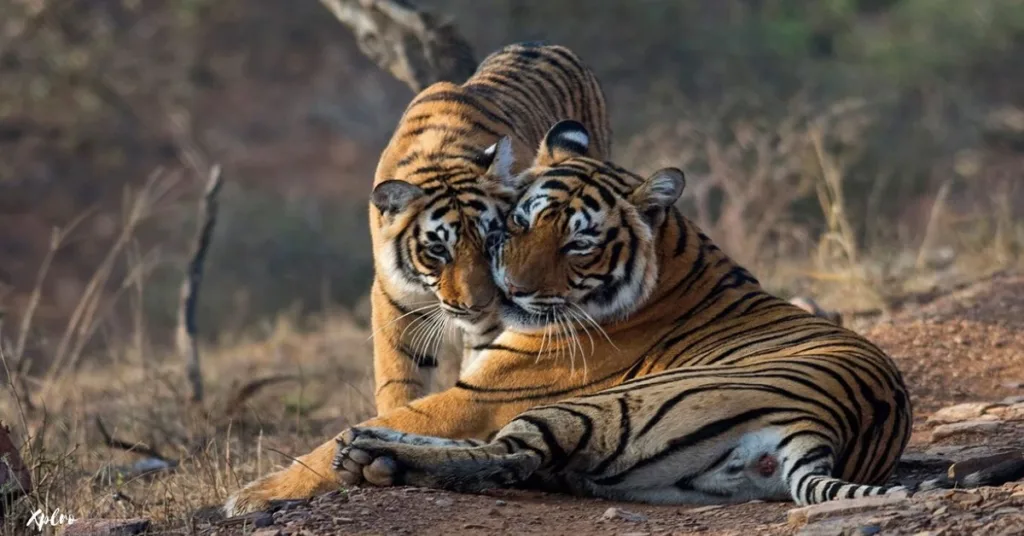
Ranthambore is a well-known wildlife sanctuary in India and a great place to take pictures of Bengal tigers. The park’s dry forests, old buildings, and big bodies of water make a beautiful background for wildlife photography.
Photography Tip: The optimal lighting conditions for photographing tigers in their natural habitat are found during early morning or late evening safaris.
2. Kaziranga National Park (Assam)
Optimal for: One-horned rhinoceroses, elephants, and water buffaloes.
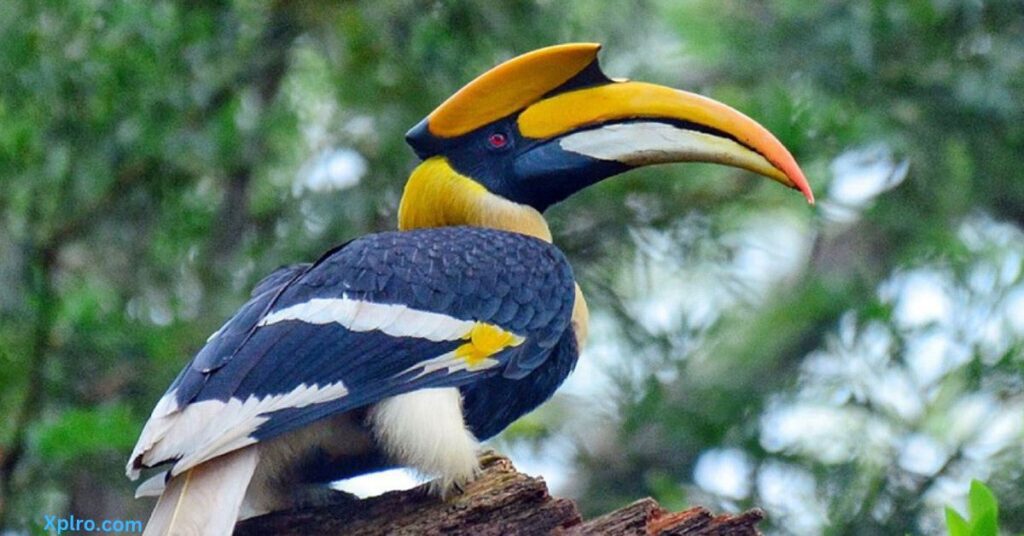
Kaziranga, a special place protected by UNESCO, is famous for its many endangered one-horned rhinoceroses. The foggy mornings and wet grasses are perfect for taking exciting wildlife photos.
Photography Tip: The expansive grasslands of Kaziranga facilitate the capture of large wildlife, such as rhinos, making the use of long lenses crucial for effective photography.
3. Sundarbans National Park (West Bengal)
Ideal for: Royal Bengal tigers, saltwater crocodiles, and avian species.
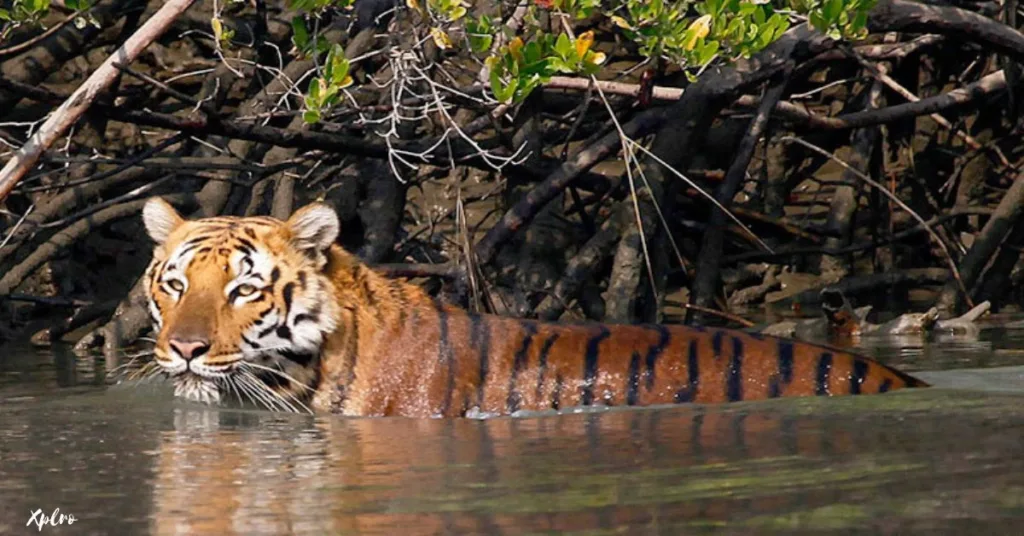
The Sundarbans is the biggest mangrove forest in the world and home to the rare Royal Bengal tiger. Seeing a tiger here can be hard, but the special landscape offers amazing chances to take photos of the water and forest together.
Photography Tip: To enhance your opportunities for observing tigers, crocodiles, and unique bird species, consider traveling by boat.
4. Bandhavgarh National Park (Madhya Pradesh)
Optimal for: Tigers, leopards, Indian bison.
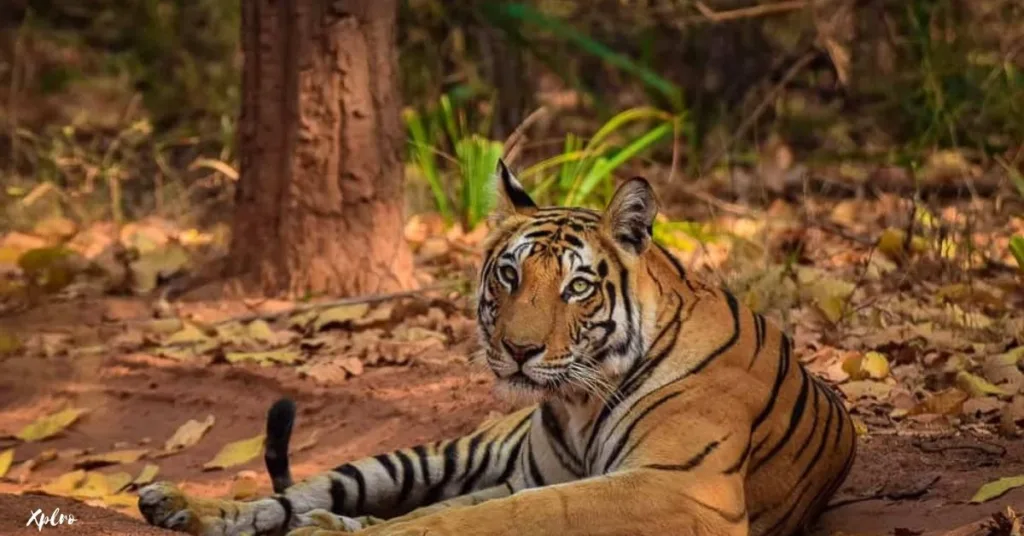
Bandhavgarh has a lot of Bengal tigers, which makes it a great place for wildlife photographers. The park’s green plants and hills are a beautiful background for taking pictures of tigers hunting.
Photography Tip: Early morning safaris provide the optimal opportunity to observe tigers and various other wildlife within the park.
5. Jim Corbett National Park (Uttarakhand)
Ideal for: Bengal tigers, elephants, and various bird species.
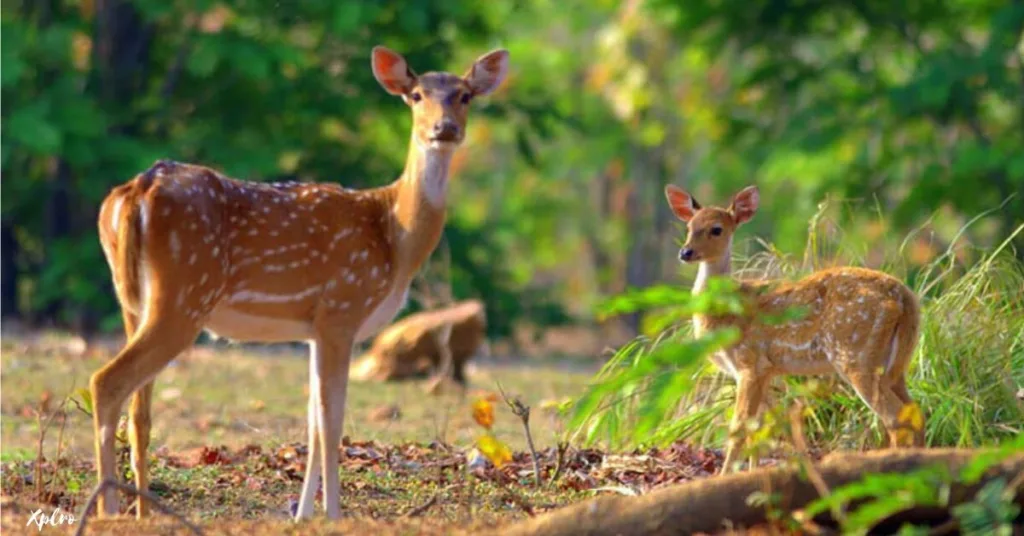
Jim Corbett is India’s oldest national park and has many different kinds of plants and animals for wildlife photographers. The park is known for its tigers, but you can also take pictures of elephants, deer, and more than 600 kinds of birds.
Photography Tip: Remain vigilant in the vicinity of water bodies to capture the opportunity of photographing tigers as they drink during the early morning or late evening hours.
6. Keoladeo National Park (Rajasthan)
Ideal for: Avian photography
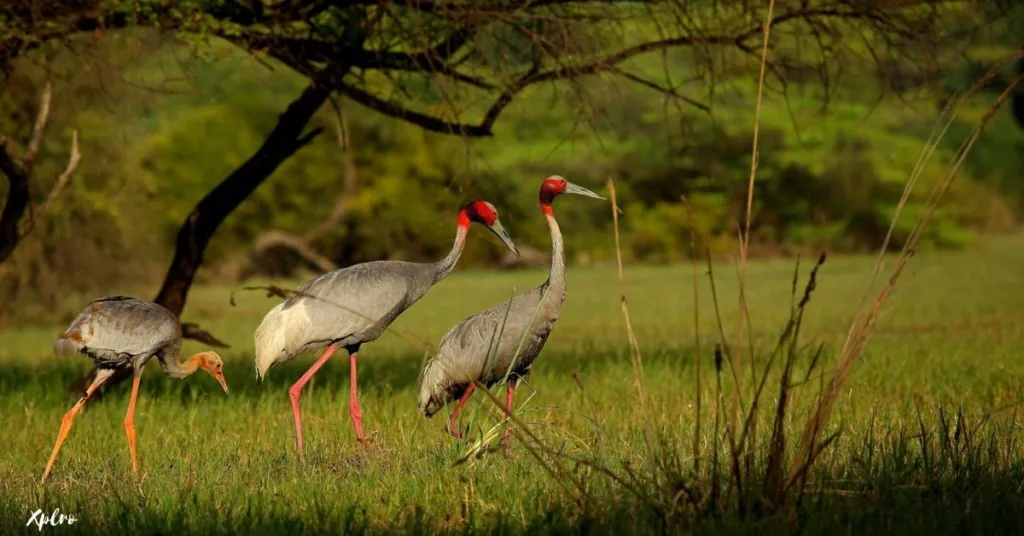
Keoladeo, once called Bharatpur Bird Sanctuary, is a great place for bird photographers. In the winter, the park has thousands of birds that come from other places, like pelicans, cranes, and storks.
Photography Tip: The soft light of early morning significantly improves bird photography, particularly during the migration period from November to March.
7. Periyar Wildlife Sanctuary (Kerala), travel to India for wildlife photography
Optimal for: Elephants, Indian bison, avian species.
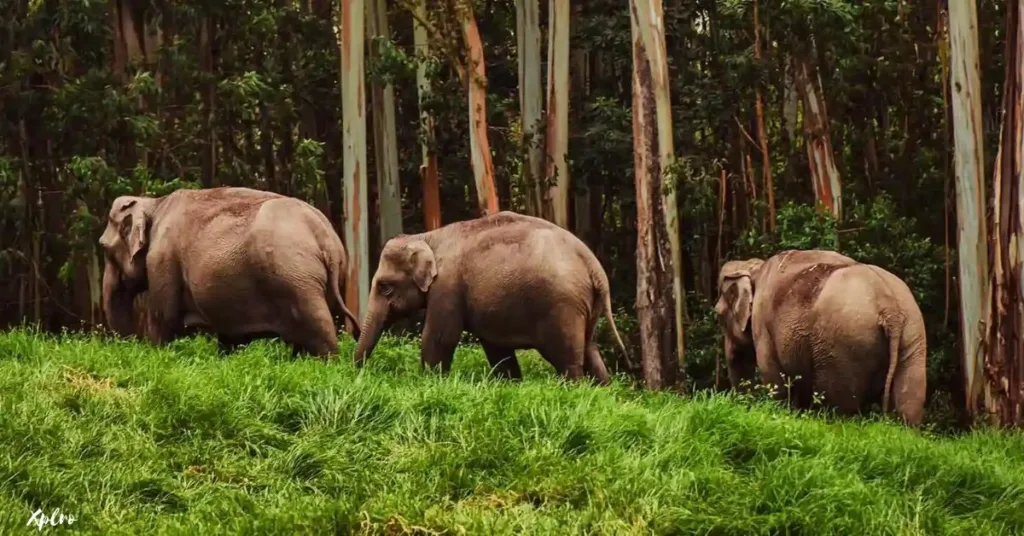
Periyar, in the Western Ghats, is a green sanctuary with many wild elephants. The sanctuary’s lakes and forests are great places to take pictures of elephants in their homes.
Photography Tip: To enhance your photography, consider capturing images of elephants as they bathe in lakes or forage in the forest during early morning boat excursions.
4. Essential Photography Gear for Wildlife Photography
When traveling to India for wildlife photography, packing the right things is important to take the best possible photos. Here’s a list of essentials:
- Camera with high frame rate: A DSLR or mirrorless camera with fast autofocus and high frames per second (fps) will help capture fast-moving wildlife.
- Long telephoto lens (200mm to 600mm): This is important for shooting animals far away while keeping the image sharp.
- Tripod/monopod: Stabilize your camera for sharper images, especially when using long lenses.
- Extra batteries and memory cards: Safaris and treks can be long, and power sources may not be available.
- Lens protection and rain cover: Dust and weather can be challenging, so ensure your gear is protected.
- Binoculars: Helpful for spotting animals from a distance before positioning yourself for the shot.
5. Wildlife Photography Tips for Beginners
- Understand Animal Behavior: Learn about the animals you want to photograph, where they live, and what they do every day. This knowledge helps you guess where they will go for better photos.
- Be Patient: Wildlife photography needs a lot of patience. Waiting for the perfect moment to capture an animal’s behavior in its natural environment is often the key to a great shot.
- Use Natural Light: Early morning and late evening provide soft, golden light, which is perfect for wildlife photography.
- Stay Silent and Respect Wildlife: Avoid sudden movements or noise that could disturb animals. Always stay at a safe distance, both for your safety and the welfare of the wildlife.
6. Eco-Friendly Wildlife Photography Practices
As a wildlife photographer, it’s important to respect the environment and the animals you’re photographing. Here are some eco-friendly things to do during your wildlife photography trip in India:
- Do not disturb animals: Avoid going into their territory or disturbing their natural behavior.
- Avoid flash photography: Flash can scare animals, so use natural light as much as possible.
- Stay on designated trails: Going off-trail can damage the environment and disturb wildlife.
- Support conservation efforts: Choose eco-friendly lodges and guides that support wildlife conservation efforts.
7. Conclusion: Why India is a Paradise for Wildlife Photographers
From the majestic Bengal tigers prowling Ranthambore’s dry forests to the endangered one-horned rhinos grazing in the misty grasslands of Kaziranga, India’s diverse landscapes are a photographer’s paradise. Capture the thrill of the hunt in Bandhavgarh’s lush jungles teeming with tigers, or witness the unique interplay of water and forest in the Sundarbans, home to the elusive Royal Bengal tiger. Explore the rich tapestry of flora and fauna at Jim Corbett, India’s oldest national park, or marvel at the spectacle of thousands of migratory birds flocking to Keoladeo during winter. Whether you’re a seasoned wildlife photographer or just starting out, Xplro.com can help you plan your dream wildlife photography adventure in India.
FAQs
1. What are the best destinations for wildlife photography in India?
- When you travel to India for wildlife photography, some of the top spots include Ranthambore National Park for Bengal tigers, Kaziranga National Park for one-horned rhinos, and Jim Corbett National Park for elephants and birds. Each destination offers unique landscapes and incredible chances to capture India’s rich biodiversity.
2. What is the best time to travel to India for wildlife photography?
- The best time to travel to India for wildlife photography is from October to March, when the weather is pleasant, and animals are more active. For capturing animals near water sources, the summer months (March to June) are ideal, though hotter. Most national parks close during the monsoon season (July to September), so plan accordingly.
3. Do I need permits for wildlife photography in India?
- Yes, when you travel to India for wildlife photography, you’ll need permits to enter most national parks and wildlife sanctuaries. Some parks also charge extra for camera equipment. Always check the park’s requirements in advance to avoid surprises during your visit.
4. What camera gear should I bring when I travel to India for wildlife photography?
- When you travel to India for wildlife photography, make sure to bring a DSLR or mirrorless camera with a high frame rate, along with a long telephoto lens (300mm to 600mm) for shooting distant animals. Additionally, carry a tripod, spare batteries, memory cards, and weather protection for your gear.
5. What eco-friendly practices should I follow during wildlife photography in India?
- When you travel to India for wildlife photography, it’s important to adopt eco-friendly practices. Stay on designated paths, avoid using flash that can disturb animals, and maintain a respectful distance from wildlife. Remember, your aim is to capture nature’s beauty without disrupting it.
6. Can I photograph Bengal tigers when I travel to India for wildlife photography?
- Yes, travel to India for wildlife photography is incomplete without a chance to photograph the iconic Bengal tiger. The best parks for tiger photography include Ranthambore, Bandhavgarh, and the Sundarbans. Early morning and late evening safaris offer the best opportunities to spot and photograph tigers in their natural habitat.
7. How many days should I plan for a wildlife photography trip in India?
- When you travel to India for wildlife photography, it’s best to stay for at least 3 to 5 days in each national park to maximize your chances of photographing rare and elusive wildlife. Multiple safaris increase your odds of sightings, allowing you to capture animals in different lighting and settings.
8. Is bird photography possible when I travel to India for wildlife photography?
- Yes, India is a bird photographer’s paradise. When you travel to India for wildlife photography, head to places like Keoladeo National Park (Bharatpur Bird Sanctuary) in Rajasthan or Chilika Lake in Odisha, both of which are renowned for their vibrant birdlife, especially during the migratory season.
9. What wildlife can I expect to photograph when I travel to India for wildlife photography?
- India’s national parks host a variety of incredible wildlife. When you travel to India for wildlife photography, you can expect to photograph Bengal tigers, elephants, Indian rhinos, leopards, and countless species of birds. India’s diverse ecosystems make it a perfect destination for capturing a wide range of animals in their natural habitats.
10. What safety tips should I follow when I travel to India for wildlife photography?
- When you travel to India for wildlife photography, always follow the instructions of your safari guide and maintain a safe distance from wildlife. Stay quiet, avoid sudden movements, and ensure that your camera equipment is securely packed to avoid accidents. Always respect the animals’ space to ensure both your safety and theirs.
11. How can I improve my skills when I travel to India for wildlife photography?
- To improve your skills when you travel to India for wildlife photography, be patient and observe animal behavior. Timing is key—early mornings and late evenings offer the best light and wildlife activity. Experiment with different lenses, settings, and angles to create dynamic and engaging shots.
12. Are guided safaris available when I travel to India for wildlife photography?
- Yes, when you travel to India for wildlife photography, most national parks offer guided safaris led by knowledgeable experts. These guides know the terrain and animal habits well, increasing your chances of spotting and photographing wildlife. Specialized photography tours are also available for those who want to focus on capturing the perfect shot.






